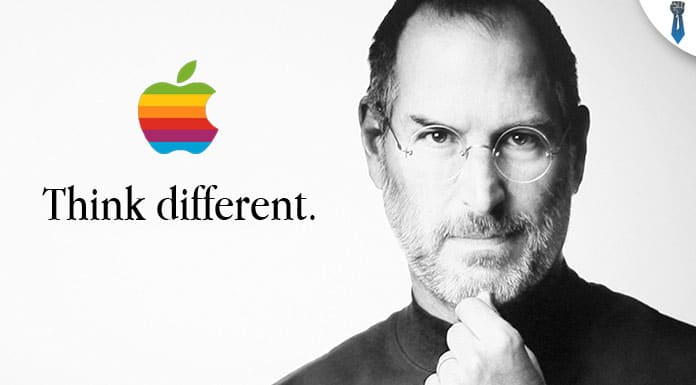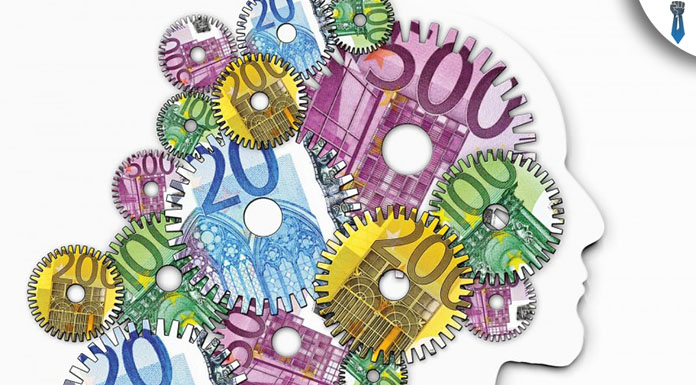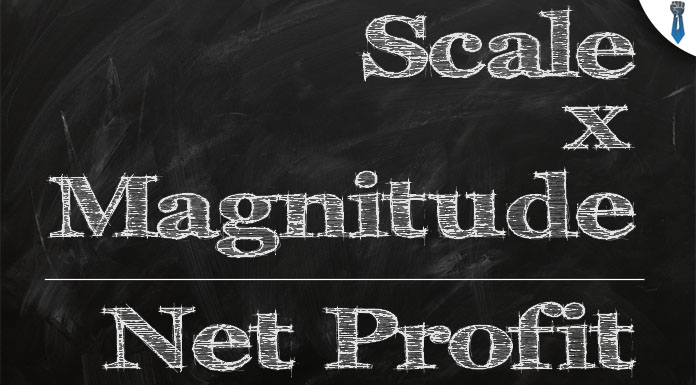What happens when you have a near-death experience?
Well, according to the general opinion (and the movies) life passes in front of your eyes as a movie trailer. In this trailer, you are supposed to see all the major moments, these exact moments that made all the difference.
Don’t worry, I am not dying (yet), but if Steve Jobs ever had a near-death experience (before the real one), these should be the most important moments of his life.
After reading Steve Jobs biography, I decided to write this post, briefly mentioning, the milestones of his life.

There might be some more, but according to my interpretation / emotional involvement, these are the most defining ones.
Enjoy!
In case you like the post, [thrive_2step id=’4158′]download the ebook “Steve Jobs” by clicking here[/thrive_2step]
Steve Jobs (1955-2011)
Birth (1955)
Steven Paul Jobs was born on February 24, 1955, in San Fransisco by Abdulfattah “John” Jandali (b. 1931) and Joanne Schieble Simpson.
Jobs, was initially to be adopted by a “Catholic, well educated and wealthy couple”, but they decided to adopt a girl instead. Paul and Clara Jobs, a “blue collar” couple adopted Steve, after they promised to his biological mother that they would send him to the college.
[bctt tweet=”Be a yardstick of quality. Some people aren’t used to an environment where excellence is expected.”]
Childhood (1957-1968)
After adopting Jobs’s sister Patricia in 1957, the whole family moved to Mountain View, California in 1961.
In this new house, Paul built a workbench in his garage for young Steve. He really loved mechanics and he would spend many hours of his day crafting things. Steve was not that much into car engines, but he had a great enthusiasm for electronics.
By the age of ten, Jobs was deeply involved in electronics and he had already made quite a few friends with similar interests. Children of his age had a difficult time, hanging around with him, and he was considered to be a “loner.” He usually misbehaved himself, mainly out of boredom for his class curriculum. He very often got himself suspended and in difficult situations in general.
It was not before he met Imogene Hill, his fourth-grade teacher, that Jobs started to show some interest for anything besides electronics. His teacher managed to “bribe” him by giving him 5$ if he managed to read a whole book.
Jobs skipped the 5th grade, but he asked his parents to move him to a new school because he had social adaptation issues and he was bullied very often.
So in 1967, the Jobs moved to Los Altos, California to a new house, which was later gonna be declared a historic site. There, Jobs met his first friend Bill Fernandez, who eventually introduced him to Steve Wozniak (Apple’s co-founder).
In 1968, at the age of 13, Jobs was given a summer job by Bill Hewlett (of Hewlett Packard) after Jobs cold-called him to ask for spare parts for some electronics project he was building.
[bctt tweet=”My job is to not be easy on people. My job is to make them better.”]
Homestead High (1968-1972)
Again during his high-school years, Jobs was not so popular. He had very few friends and he was a perfect alloy of a nerd and hippie. He was smart enough to be involved in electronics projects, while on the same time he left long hair and read the “Moby Dick“.
In 1971 after Wozniak began University of California, Jobs began to visit him a few times a month. That led him to study in the student union of the nearby Stanford University.
Reed College (1972)
After high-school, Jobs enrolled at Reed College in Portland, Oregon. Jobs’s parents were spending too much in tuition, and after only a few months, Jobs decided to drop out from being an enrolled student and took some auditing classes like calligraphy instead.
In his all famous commencement speech for Stanford University, Jobs said that during this period, he was so broke that he returned Coke bottles for food money, got weekly meals at the local church and he was sleeping on the floor in friends’ rooms. In that same speech, Jobs admitted that the Mac would have never had multiple font support if he had dropped out of this calligraphy course.
[bctt tweet=”If today were the last day of your life, would you want to do what you are about to do today?”]
Pre-Apple (1972-1976)
In 1972, Steve Wozniak designed a custom version of the classic video game Pong. After it was done, Wozniak gave the finished version to Jobs and the later took the game to Atari, Inc. in Los Gatos, California. People in Atari thought the game was developed by Jobs and they offered him a technician job there.
Jobs planned and finally executed his long trip in India in mid-1974, with his friend from Reed College, Daniel Kottke, in search of spirituality end enlightenment.
After staying in India for 7 months, Jobs returned to the US in a rather changed appearance. He shaved his head and he was wearing traditional Indian clothing. In parallel, Jobs experienced psychedelics and LSD, which was among the most important experiences in his life as he said.
After his return, Jobs joined Atari once again. He was then assigned to create a circuit board for the infamous arcade game Breakout. Bushnell Atari offered 100$ for each Transistor-Transistor Logic (TTL) chip eliminated from the board. Jobs was canning, but had a poor knowledge in circuitry design, so he offered Wozniak a deal. He told him to design the board together and split the earning fifty-fifty.
Wozniak managed to reduce the TTL chips to 46, a design so tight, almost impossible to reproduce on the current assembly lines. According to Wozniak, Jobs gave him 350$ and he told him that Atari paid them 700$ in total (instead of the actual $5000). Wozniak found out about ten years later, but as he said, he wouldn’t mind give Jobs the money, if he had told him he faced any economic difficulties.
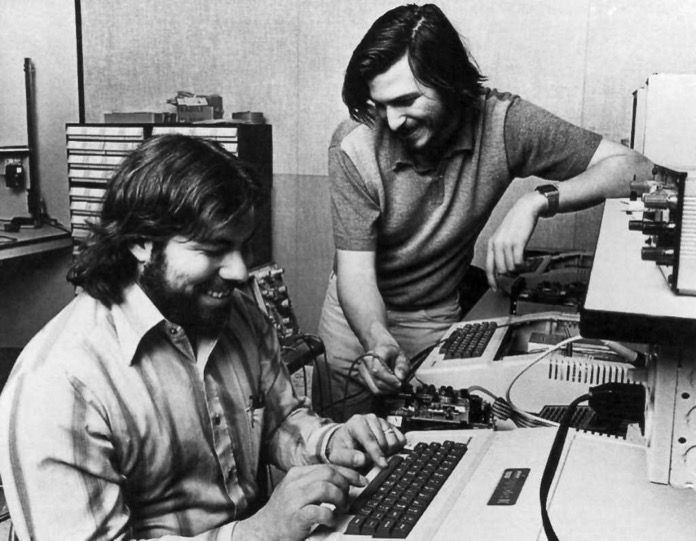
After that, Wozniak and Jobs built a low-cost digital “blue box” which is a tone generator to manipulate the telephone network in order to make free long-distance calls. Although illegal, Jobs decided they could make some profit out of this device. And so they did. After spending six months in building this box, they made a profit by selling it, and on the same time they proved to themselves that, electronics could be fun and profitable in the same time.
As he later said, Apple might never have come to existence, if it wasn’t for this blue box.
[bctt tweet=”Innovation distinguishes between a leader and a follower.”]
Apple (1976-1985)
This might probably be one of the most important periods in Jobs’s life. His former period with apple began in 1976. Wozniak and Jobs invented Apple I computer. Together, they decided to sell this computer and see how it goes. Together with Ronald Wayne, they formed Apple Computer in Jobs’s garage in Los Altos.
Wayne didn’t stay for long, he left shortly after, leaving Jobs and Wozniak as the primary co-founders of Apple.
In those initial stages, they received funding from a semi-retired product marketing manager and engineer named Mike Markkula, from Intel.
By early 1977, Brennan (Jobs’s girlfriend) had returned from her journey to India and together with Jobs, they spent a lot of time together at her home in Los Altos.
In that same year, Apple Computers introduced the Apple II at the West Coast Computer Faire. It really was the first consumer product ever sold by Apple Computer. Moreover, it was a big success and one of the first mass-produced microcomputer products ever. It was mainly designed by Steve Wozniak with Jobs overseeing the development of the Apple II’s revolutionary casing and Rod Holt developing the unique power supply.
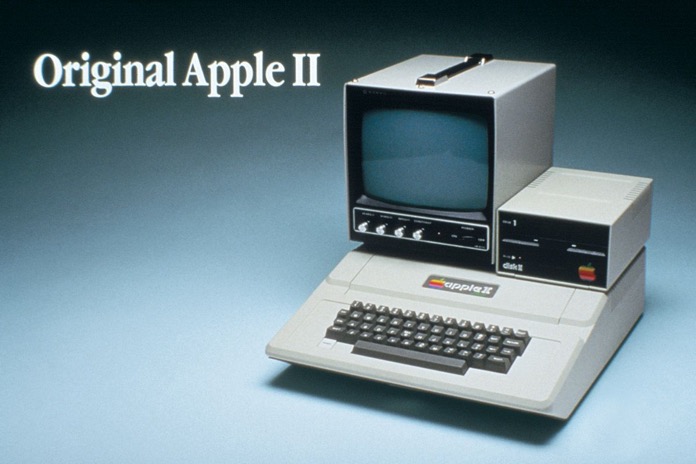
Jobs very often used to wear a black long-sleeved mock turtleneck made by Issey Miyake, Levi’s 501 blue jeans and New Balance 991 sneakers. As he claimed, he did that in order to keep a balance between his daily convenience and his ability to convey a signature style.
In 1977, Brennan was asked by Rod Holt if she wanted to work as a paid apprentice, designing blueprints for Apple.
By the age of 23 (1978) Jobs’s net worth was a million dollars, 10 million when he was 24, and at the age of 25 he was worth more than 100 million dollars. Moreover, he was one of the youngest people ever to make the Forbes list among US’s richest people – and among a handful of them who had done it for themselves, without inherited wealth.

In 1978, Jobs hired Mike Scoot to become the new CEO, but it turned out to give the company a couple of rough years. In 1983, Jobs managed to lure John Sculley away from Pepsi-Cola to make him the new Apple’s CEO. He is supposed to have said to Sculley “Do you want to spend the rest of your life selling sugared water, or do you want a chance to change the world?
The following year, Apple introduced the Macintosh, which was based on the Lisa model, incorporating a new graphical user interface (GUI) inspired by Xerox Parc’s mouse-driven environment. A few months later Apple gave live, for the first time, the all-time classic Super Bowl commercial with the title “1984” presenting Macintosh to an ecstatic audience.
Despite the hype, Macintosh was very expensive and hard to sell. A few months after its release Bill Gates and his then still developing company Microsoft, threatened they would stop to develop software for Mac unless Apple granted them with a license to build a similar GUI.
Sculley granted that access (which caused many problems to Apple) and a whole Mac interface cloning began. Many cheap IBM clones were built, and by packing inside a graphical interface, they killed Apple’s advantage on that front. Macintosh wasn’t just expensive, but it had an army of IBM-clones to fight against.
Jobs and Sculley had a completely different vision for the company. Jobs was always in favor of a closed architecture, where the company builds both software and hardware. Opposed to that, Sculley wanted to transform Apple in more Windows like company. He liked open architecture computers like the Apple II and he wanted to sell primarily to small businesses and home markets.
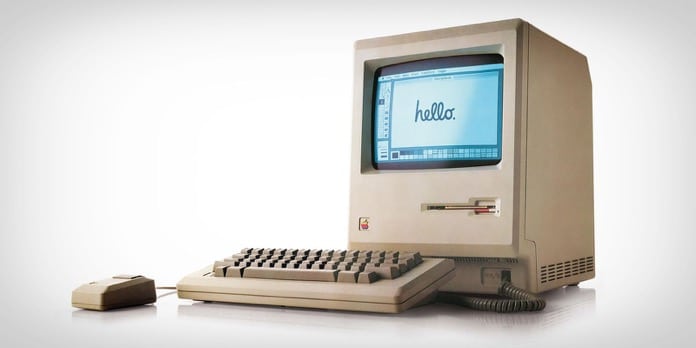
In the meantime, Apple was divided on two campuses. The Apple II division and the Macintosh division. Apple II was bringing in about 85% of the total sales, yet in January’s 1985 annual meeting, Apple II division was not to be found anywhere. Many left Apple including Wozniak who said the company was taking a very faulty way. He sold the majority of his stocks and left.
In May 1985, Sculley decided to reorganize Apple and he proposed a plan to remove Jobs from the Macintosh division, and instead put him in charge of “New Product Development” department. This move would essentially make Jobs powerless and so he decided to leave the company. His initial resignation was not accepted but a few months later he applied again, and on September 17, 1985, Jobs left Apple.
[bctt tweet=”People who know what they’re talking about don’t need PowerPoint.”]
Post-Apple (1985-1997)
NeXT Computer
After his resignation from Apple in 1985, Jobs founded NeXT Inc. with 7 million dollars. A year later the newly founded company had no money left, so Jobs turned to venture capitalists. Eventually, Jobs got the attention of billionaire Ross Perot who made a big investment in the company.
The first NeXT workstations were introduced in 1990, priced at $9,999. Again like Apple Lisa, this workstation was technologically advanced but cost-prohibitive by the educational niche, for which it was originally designed. The NeXT workstation still remains known for its object-oriented software development system and incorporated quite a few technological advancements like the Mack kernel, the built-in Ethernet port and the digital signal processor chip. Tim Berners-Lee is supposed to be the inventor of the World Wide Web (WWW), initially developed on a NeXT computer at CERN.
The second generation revised computer of NeXT, which was called NeXTcube, was released in 1990 as well. Although technologically very advanced, NeXTcube was still very expensive and after 3 years in the market, it had only sold about 50.000 machines. After that NeXT turned to a full software company and in 1996 NeXT Software, Inc. released WebObjects, a powerful framework for web application development.
NeXT was acquired by Apple in 1997, and WebObjects was used to build and run the Apple Store and iTunes Store.
Pixar and Disney
In 1986, Steve founded the spin-out of the Graphics Group, which was later named Pixar, from the Lucasfilm’s graphics division for $10 million. $5 million was given as capital and the other half was given to Lucasfilm as intellectual property rights.
The first film ever produced by Pixar was Toy Story (1995) and it was a major success. It made the studio well-known everywhere and established Jobs among the most successful visionaries once again.
Over the next years Pixar produced many well-known animation films such as:
- A Bug’s Life (1998)
- Toy Story 2 (1999)
- Monsters, Inc. (2001)
- Finding Nemo (2003) – a personal favorite
- The Incredibles (2004)
- Cars (2006)
- Ratatouille (2007)
- WALL-E (2008)
- Up (2009)
- Toy Story 3 (2010)
Finding Nemo, The Incredibles, Ratatouille, WALL-E, Up and Toy Story 3, all of them received the Academy Award for Best Animated Feature, an award introduced in 2001.
In 2004, Pixar’s contract with Disney was coming to an end and Jobs failed to make a new deal with Michael Eisner (Disney’s chief executive). In October 2005, Bob Iger (who replaced Eisner) came to a deal with Steve Jobs and Pixar. On January 24, 2006, Iger and Jobs announced that Disney acquired Pixar in a stock-only transaction, worth $7.4 billion. After this deal, Jobs became the largest single shareholder of Walt Disney, with approximately 7% of the company’s stock.
Jobs stock percentage far exceeded those of Eisner at about 1.7 percent and even those of Roy E. Disney who had about 1% until his death in 2009.
Family
Chrisann Brennan mentioned that after Jobs left Apple, “he apologized many times about his behavior.” She also said that Jobs regretted for not taking responsibility over his child and after some years when Lisa was nine, her name went from “Lisa Brennan” to “Lisa Brennan-Jobs.”
Back then, Jobs didn’t try to find his biological parents because, like he said, didn’t want to upset his step parents. However, in 1986 when he was 31, his step-mother Clara was diagnosed with lung cancer. After that jobs started looking for more details about his biological mom. Jobs found on his birth certificate the name of the doctor who gave birth to him. Although the doctor didn’t help Jobs find his mother while he was alive, he left a letter (mentioning who Job’s real mother was), which was to be opened after his death.
Jobs only contacted his biological mother after, Clara died and after he got, his step father’s permission out of respect. Jobs thanked his mother for giving birth to him and for not having an abortion back then. She repeatedly asked for his forgiveness and after they met, they developed a friendly relationship until Jobs’s death in 2011.
During their first meeting, Schieble told Steve that he had a sister, Mona, who was not aware of his existence. Schieble then arranged a meeting in New York where Mona was working. They liked each other from the beginning and as time was passing they got very close. Jobs later said that he could never imagine a better sister than Mona. His adopted sister, Patty and him, were never that close.
After that, Jobs learned his family history. He told his biographer that after meeting Simpson, he wanted to become involved in her search for their father. When he found out that he works in Sacramento, they decided that only Simpson would meet him. Jandali and Mona had a long talk. Among other things, Jandali mentioned that besides her, they also gave away another child for adoption. (Simpson didn’t mention that she knew who this boy was).
Jandali also said to Mona that he used to manage a restaurant in San Jose, where many successful people used to have their lunch. Even Steve Jobs! He used to eat there and he was a great tipper as he said. After hearing about this visit, Jobs remembered about this guy. He was Syrian. However, Jobs never met his father, nor he was especially interested in knowing more about his Syrian heritage.
Jobs met his future wife, Laurene Powell, in 1989 where she was a student. He was giving a lecture and as he later stated, he could not take his eyes off of her. After the lecture, they went in the parking lot and Jobs invited her for dinner. Practically they never split again after this moment.
Unlike Jobs, Laurene was very athletic and she was involved in professional sports. Jobs proposed to her on New Year’s Day 1990 in Yosemite National Park. Only about fifty people were invited (including his sister Mona and his father Paul). Jobs and Laurene had their first child, Reed on September 1991. One year and a half later, Jobs’s father died on March 5, 1993. Jobs and Laurene had also two more children, Erin who was born in August 1995, and Eve, born in 1998. Until Jobs’s final days, the family lived in Palo Alto, California.
[bctt tweet=”The ones who are crazy enough to think that they can change the world, are the ones who do.”]
Return to Apple (1997-2011)
A deal between Apple and NeXT was finalized in 1997. Apple bought Jobs’s company for $427 million. Jobs was once again back to the company he co-founded a few years before. Being a lot more mature at this point, Jobs was determined to make Apple a big company again.
In 1998, in an effort to make Apple profitable again, he ended numerous projects, such as Newton, OpenDoc and Cyberdog. Jobs altered the licensing program for Mac clones, making it way too costly for other manufacturers to continue making machines on their own.
Along with the purchase of NeXT, much of the company’s technology was used in new Apple products. Mac OS X was an evolution of NeXTSTEP for example. With Steve’s guidance, the company sales increased significantly. iMac and some other new products were new and very profitable additions to the Apple’s product line. At the Macworld Expo of 2000, Jobs officially dropped the “interim” title and became once and for all the permanent CEO and only true leader of Apple.
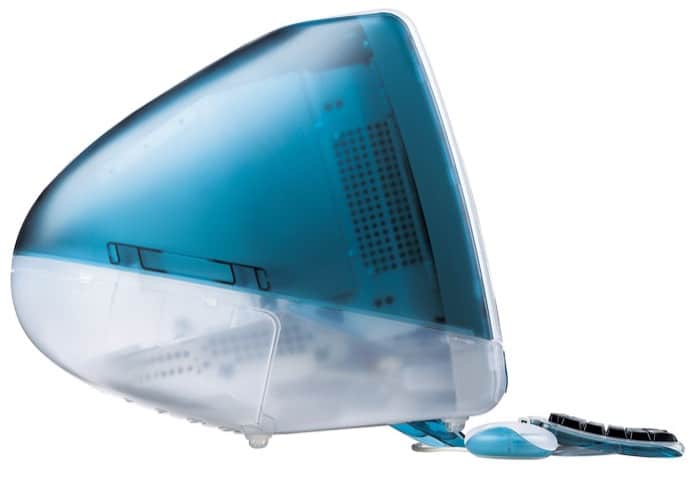
After all the success, Apple created a whole new line of hardware and software products such as the iPod music player, the iTunes music player and the iTunes Store. All these were huge hits and the company profits exploded.
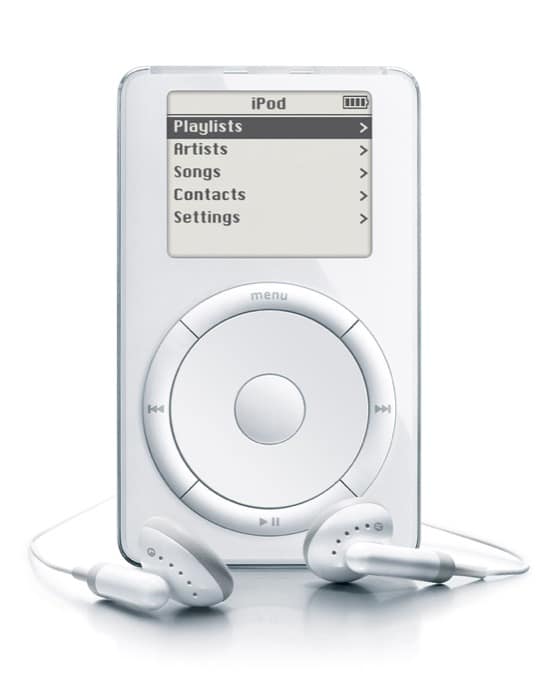
On June 29, 2007, Apple entered the mobile phone arena, introducing the iPhone, a multi-touch device, which also incorporated the capabilities of an iPod. This 3.5-inch device (which I still have by the way) changed forever the way we design, make and use our phones.
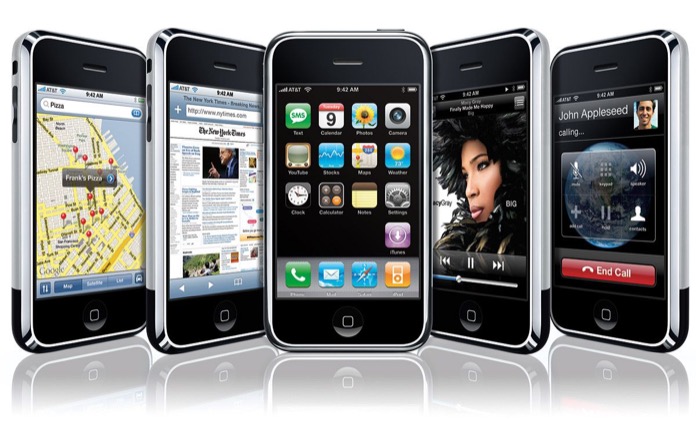
In 1987, Jobs started a war of words with Dell Computer, by “naming” their computers “un-innovative beige boxes.” On October 1997, when Michael Dell was asked what he would do if he ran Apple himself, he responded: “I’d shut it down and give money to shareholders.” A few years later, in 2006, Jobs sent an email to all employees when Apple’s stock surpassed the ones of Dell:
Team, it turned out that Michael Dell wasn’t perfect at predicting the future. Based on today’s stock market close, Apple is worth more than Dell. Stocks go up and down, and things may be different tomorrow, but I thought it was worth a moment of reflection today. Steve.
Jobs was both criticized and admired for his “special” style at persuasion and salesmanship. Also known as the “reality distortion field“, this signature skill was vividly expressed during all his keynote speeches at Macworld Expos and Apple Developers Conferences.
Jobs was also known for his environmental friendly ideas. After many accusations of Apple’s products being environmentally non-friendly, he made many recalls especially on iPods, in order to replace them with new “green” ones. He also ran many similar programs for Mac computers.
Jobs’s main mantra was always to be a demanding perfectionist who inspired people to bring their business at the front lines of technology through innovation, foreseeing and style. That together with many more traits, made Apple the word’s most valuable publicly traded company in 2011.
It is worth noting another famous response of Steve Jobs in January 2007 at the Macworld Conference by quoting ice hockey player Wayne Gretzky:
There’s an old Wayne Gretzky quote that I love. “I skate to where the puck is going to be, not where it has been.” And we’ve always tried to do that at Apple. Since the very, very beginning. And we always will.
Health Issues
In October 2003, Jobs was diagnosed with pancreatic cancer. In 2004, he announced to his employees that he had a cancerous tumor but that his type was a much less aggressive one. Instead of having proper medical treatment, Jobs decided to fight his cancer with natural cures and remedies, veganism, juice diets, acupuncture etc.
Specialists disagree whether this cost him his life or not. Others say that he essentially committed a suicide doing that, and some others, that he would have died no matter what. In July 2004, he eventually undertook a pancreaticoduodenectomy, that appeared to remove the tumor with success. Jobs refused to take any chemotherapy or radiation therapy. Tim Cook, head of worldwide sales and operations, ran the company while Jobs was absent.
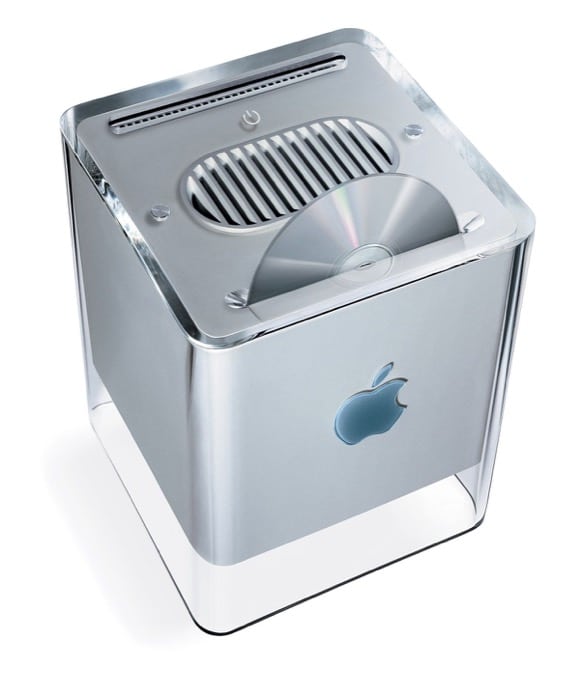
For the following years, Jobs had more “ups” and “downs” with his health status. At some conferences, he looked thin and tired, while on others strong and robust. Media was all over him about his health issues, but he was very rarely talking about it. On December 16, 2008, Apple announced that the final keynote at the Macworld conference would be delivered by Phil Schiller, the vice-president.
On January 14, 2009, Jobs announced that he will be absent from Apple for six months because his health condition was more serious than what he had thought initially. Tim Cook replaced him once again as CEO, with Jobs remaining involved with Apple’s strategic decisions.
In 2009, Cook offered to give a portion of his liver to Jobs, but the latter refused to do such a thing. In April of the same year, Jobs made a liver transplant in Memphis, Tennessee, with an “excellent” prognosis.
[bctt tweet=”The only way to do great work is to love what you do.”]
Resignation (2011)
A year and a half later, after his liver transplant, on January 17, 2011, Apple announced that he had been granted a medical leave of absence in order to focus on his medical issues. Tim Cook would be in charge of daily operations and Jobs would still be involved in strategic decisions. Despite his health condition, Jobs was present at the presentation of iPad 2 (March 2) and the WWDC keynote introducing iCloud (June 6).
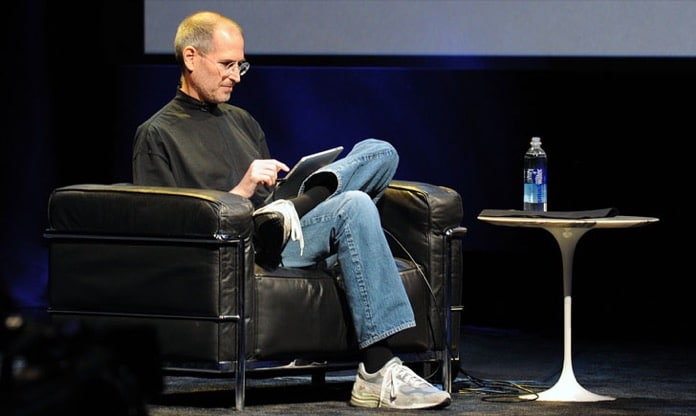
On August 24, 2011, Jobs announced his resignation as Apple’s CEO, saying to the board of directors, “I have always said if there ever came a day when I could no longer meet my duties and expectations as Apple’s CEO, I would be the first to let you know. Unfortunately, that day has come.” Jobs was announced chairman and Tim Cook succeeded him as CEO. Jobs stayed with Apple until the day before his death six weeks later.
[bctt tweet=”I want to put a dent in the universe.”]
Death (October 5, 2011)
Steve Jobs died at his home in Palo Alto, California at around 3 p.m. on October 5, 2011, due to complications from his previously treated pancreatic cancer, resulting in respiratory arrest. He had already lost consciousness a day before and during his death all of his family, including his children, his wife and his sister, were there during his final hours.
Apple, Pixar, Microsoft and Disney, all flew their flags at half-staff throughout their respective campuses and headquarters. Apple co-founder, Bill Gates of Microsoft and even President Obama, all offered statements in response to his death.
Jobs was buried in an unmarked grave at Alta Mesa Memorial Park, the only non-denominational cemetery in Palo Alto.
[bctt tweet=”Stay hungry, stay foolish.”]
Innovations and designs
According to Steve Wozniak, Jobs didn’t ever write any code. He was not an engineer, he was a salesman. Wozniak was the innovator and Jobs was the marketing person.
He is listed as either primary inventor or co-inventor in 346 US patents or patent applications related to a big range of technologies from computer and portable devices to user interfaces, keyboards, speakers, power adapters etc. Most of his design patents such as the one of the original lamp-style iMac and the PowerBook G4 Titanium had them together with Jonathan Ive, his industrial design chief.
Even the day before his death, he had patents issued on his name like the Mac OS X Dock user interface with the “magnification” feature. Since his death, Jobs has won another 141q patents, bringing the total number for his lifetime to over 450.

Between others, some of Steve Jobs’s greatest innovations include:
Conclusion
I tried to be as descriptive as possible, without being emotionally involved. I might not have done a good job across the whole article, but the main point was to let you know on Steve Jobs’s life and nothing more.
We will have plenty of time in the future to analyze some of his traits, strengths and weaknesses and more in future articles.
I might have lied a bit on the 11 minutes part, but it really is impossible to even mention all of the milestones of the life of such a charismatic person in less content. I sure hope it did worth it.
One more thing…
Here’s to the crazy ones. The misfits. The rebels. The troublemakers. The round pegs in the square holes.
The ones who see things differently. They’re not fond of rules. And they have no respect for the status quo. You can quote them, disagree with them, glorify or vilify them.
About the only thing you can’t do is ignore them. Because they change things. They invent. They imagine. They heal. They explore. They create. They inspire. They push the human race forward.
Maybe they have to be crazy.
How else can you stare at an empty canvas and see a work of art? Or sit in silence and hear a song that’s never been written? Or gaze at a red planet and see a laboratory on wheels?
We make tools for these kinds of people.
While some see them as the crazy ones, we see genius. Because the people who are crazy enough to think they can change the world, are the ones who do.
~ Steve Jobs
In case you like the post, [thrive_2step id=’4158′]download the ebook “Steve Jobs” by clicking here[/thrive_2step]
Also you can share or like it, so more people can learn a bit more about this great personality.
